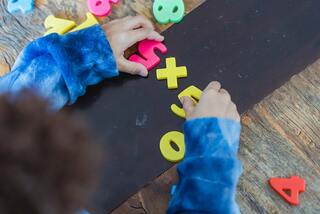How to Burp Your Baby - A Step by Step Guide
Bringing a newborn into the world is an incredible journey filled with joy and learning. As a new parent, you’ll quickly become familiar with the unique needs and challenges that come with caring for your little one. One important aspect of infant care is burping, a simple yet crucial technique that helps prevent discomfort and colic. In this comprehensive guide, learn the signs of trapped gas and different techniques to burp your baby; providing you with the confidence and knowledge you need to ensure your baby’s comfort.

Why Burping Matters:
Burping is a crucial and important part of caring for your baby’s delicate digestive system. During feeding, babies swallow air along with their milk, which can lead to gas buildup and discomfort. Proper burping helps release trapped air, reducing the likelihood of colic, fussiness and spit-up and make feeding more pleasant. Regular burping improves sleep quality, as a content baby is more likely to settle down for longer and peaceful naps.
Step by Step Guide to Burping Your Baby:
 |
 |
 |
|---|
1. Choose the Right Position:
Select a comfortable and safe place for burping your baby. You can choose from a few different positions:
✅ Over the Shoulder:
👉🏼 Hold your baby upright with the head resting on your shoulder
👉🏼 Pat the back with your other hand
Tip: Cupping your hand slightly is gentler than a flattened palm
✅ Sitting on Your Lap:
👉🏼 Sit your baby on your lap supporting the chin and chest with one hand
👉🏼 Rub or pat the back with your other hand
Tip: Use repeated, gentle pats on your baby’s back
✅ Face-Down on Your Lap:
👉🏼 Rest your baby faced down on your lap and gently rub or pat the back
Tip: Keep a cloth nearby in case your baby spits up

Tip: Fathers are also capable of burping their babies; it’s not a task exclusive to women. Dads can utilize moments like this to foster a strong bond with their children and offer support and comfort to their spouses.
2. Timing is Everything:
Burp your baby during and after feeding. If you’re breastfeeding, try switching breasts midway through to ensure your baby gets a chance to burp. For bottle-fed babies, pause periodically during the feeding to allow for burping.
Bottle feeding is usually not advisable especially if the mother is able to breastfeed.
3. Be Patient and Gentle:
Babies have delicate bodies, so it’s important to be patient and gentle while burping. Use soft pats or gentle rubs on the back, applying slight pressure to help release trapped air. Avoid excessive force, as this can lead to discomfort.
4. Listen and Observe:
As you burp your baby, listen for small burps or gurgles. These are signs that air is being released. Additionally, pay attention to your baby’s body language – if they seem more relaxed and content after burping, you’re on the right track.
5. Experiment with Different Techniques:
Every baby is unique, so don’t be afraid to try different burping techniques to find what works best for your little one. Some babies may respond better to a gentle circular motion on their back, while others might prefer a firmer pat.
6. After-Burping Care:
Once your baby has successfully burped, give them a few moments to settle before continuing with feeding or placing them down to sleep. This helps ensure that they are comfortable and less likely to experience discomfort.
Conclusion:
Mastering the art of burping is an essential skill for any new parent. By following our step-by-step guide and tuning into your baby’s cues, you’ll be able to prevent discomfort and keep your baby content and happy. The more comfortable the baby feels, the more cheerful they are. Remember, every baby is different, so be patient and flexible as you explore various burping techniques. With practice and care, you’ll become a pro at burping your baby and providing them with the best start on their journey of growth and development.





 4 min read
4 min read









